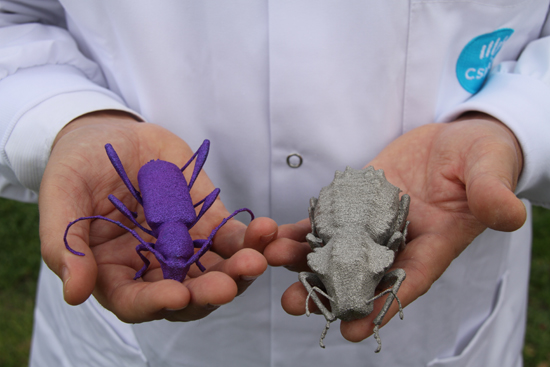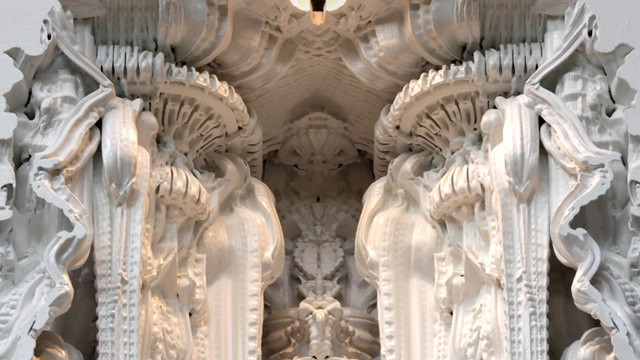
Titanium bug models built through AM and used to assist entomologists. Courtesy of CSIRO.
Latest News
June 21, 2013
In the course of my diligent efforts to keep you good people up to date on the state of additive manufacturing (AM), I come across many interesting news items. I’ll gather them up every so often and present them in a Rapid Ready Roundup (like this one). You can find the last Roundup here.
RAPID 2013 has come and gone, and if you happened to miss it you can check out Rapid Ready’s day one and day two coverage of the event. This year’s conference was the biggest yet with more than 2,500 attendees. The continued growth in the industry is no doubt responsible, as more and more people come across AM in their work or everyday lives.
“Exhibitors said this was the best event they’ve ever attended, expressing an incredible level of enthusiasm about new and existing applications for 3D printing and additive manufacturing,” said SME Business Development Manager Gary Mikola. “It generated significant media coverage and included attendees from nearly 30 countries and the U.S.”
Moving on, we’ve covered a good number of stories about 3D printing houses, but now the process has moved indoors with an AM-built room. The Digital Grotesque project is using the manufacturing technology to create a spectacular room with designs generated through an algorithm. The results are fascinating, and slightly creepy.
In the project Digital Grotesque we explore the new potentials of digital design using a reduced, minimalist approach that nonetheless transcends rationality. Inspired by the natural process of cell division, we develop an algorithm that iteratively divides and transforms the initial geometry of a simple cube. Despite simple rules, a complex world of forms arises at multiple scales: between ornament and structure, between order and chaos, foreign and yet familiar: a digital grotesque. – Benjamin Dillenburger and Michael Hansmeyer
From a room, we move up the scale to a 3D printed city. Mitekgruppen is a model making company located in Stockholm, Sweden. In 2005, the company was commissioned by Stockholm to produce a scale model of the city that could be on continuous display for six years, and be updated every six months. Instead of attempting to build, then re-build, the model from more traditional materials, such as wood and paper, Mitekgruppen chose to use 3D printing for its flexibility and speed.
The company selected a single Stratasys Dimension for the project, but ended up renting a second machine because of the size of the project. The 157 sq.-ft. replica (scale of 1: 1000) exhibit required both systems to run nearly 24 hours a day, seven days a week to meet the six month deadline. The company reports the results of their work has been extremely popular, and the experience led to a further investment in a second AM system.
Last then, we have some bugs. CSIRO has been assisting scientists in Australia who study the tiniest creatures on the continent with the help of a scanner and 3D printer. Originally intended as a public display, researchers quickly realized the potential of what they had created. In place of studying a specimen through a microscope, scientists have scanned bugs, worked the CAD file for print, and built bug models about 40 times larger than the original model.
“The 3D bugs show new potential for entomologists studying the anatomy of miniscule creatures by enabling them to physically handle the insects and study their features up close,” said CSIRO Science Art Fellow Eleanor Gates-Stuart. “We combined science and art to engage the public, and through the process we’ve discovered that 3D printing could be the way of the future for studying these creatures.”
Below you’ll find a (sorry, non-English) video about the Digital Grotesque project.
Sources: Stratasys, Creators Blog, PR Web, CSIRO
Subscribe to our FREE magazine, FREE email newsletters or both!
Latest News
About the Author
John NewmanJohn Newman is a Digital Engineering contributor who focuses on 3D printing. Contact him via [email protected] and read his posts on Rapid Ready Technology.
Follow DE








